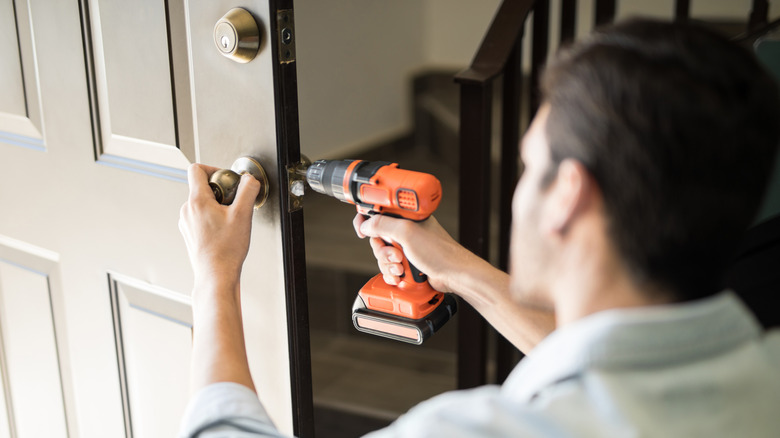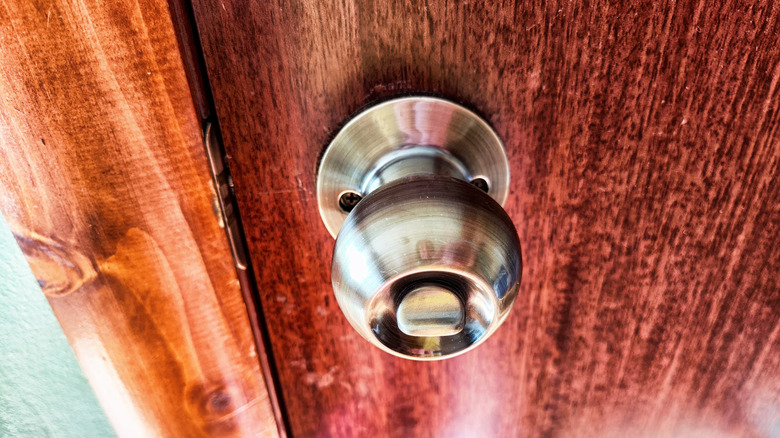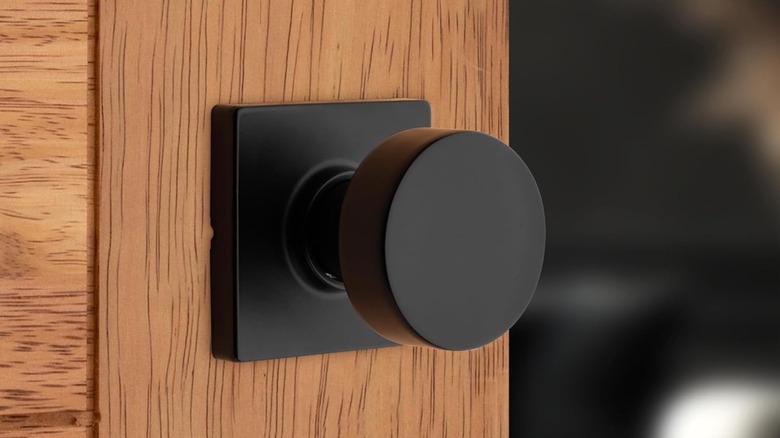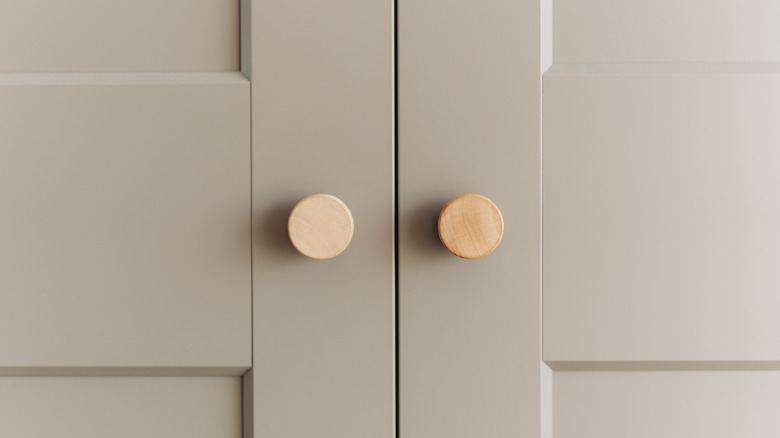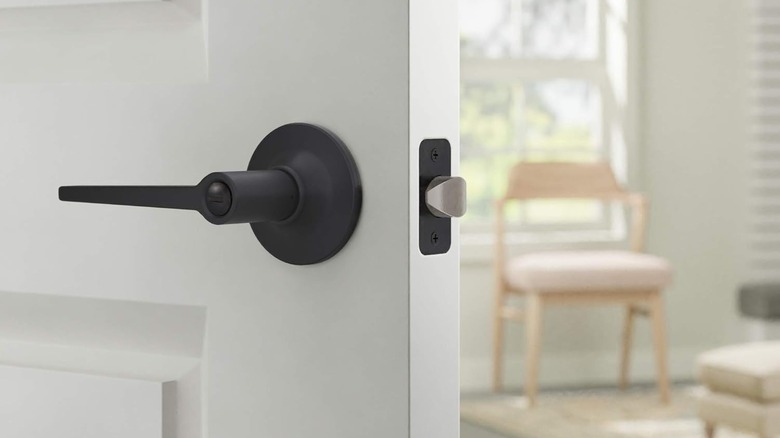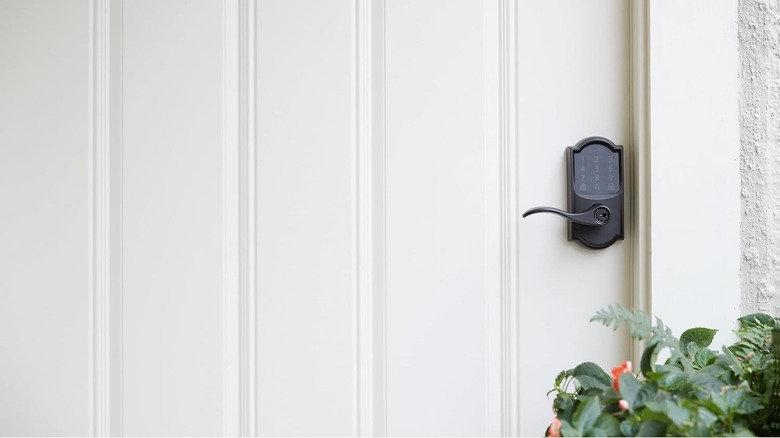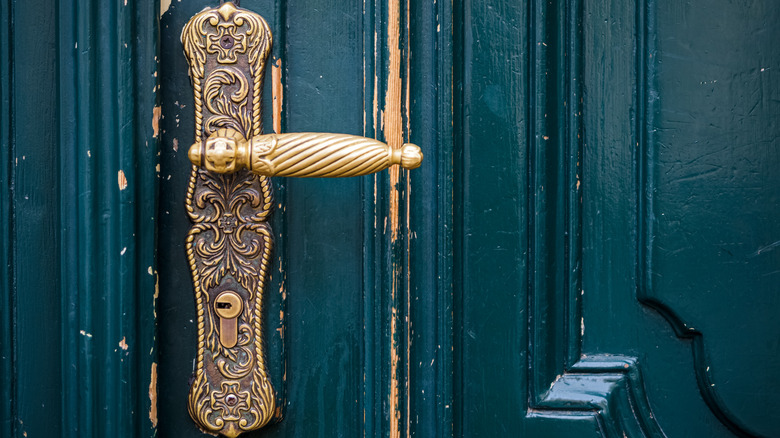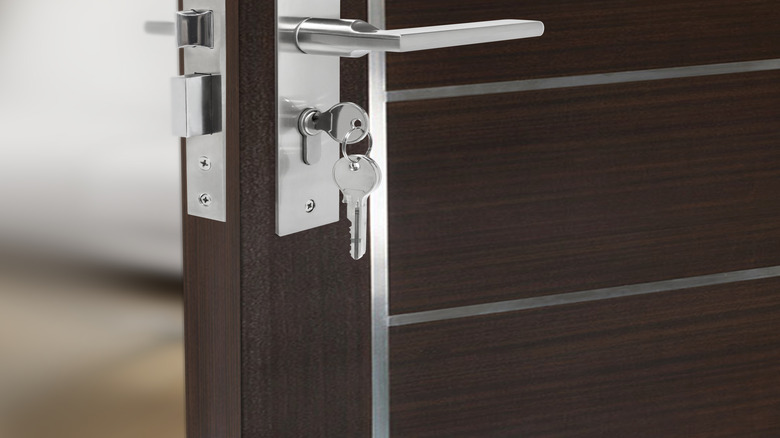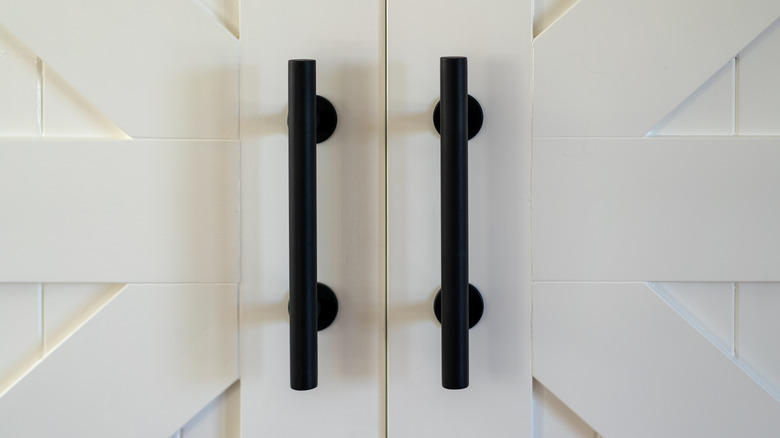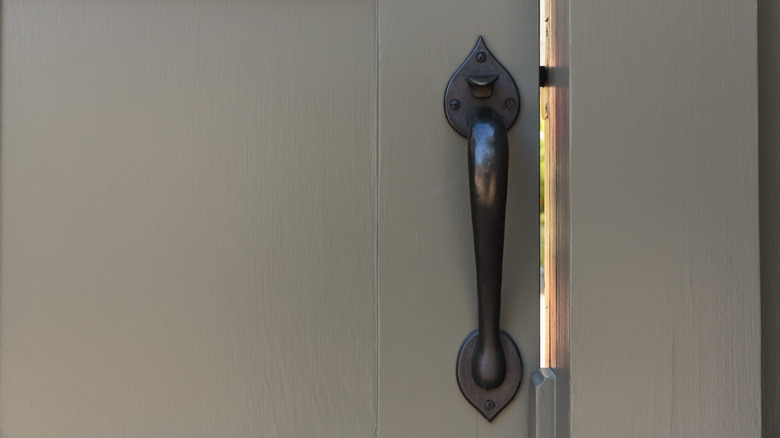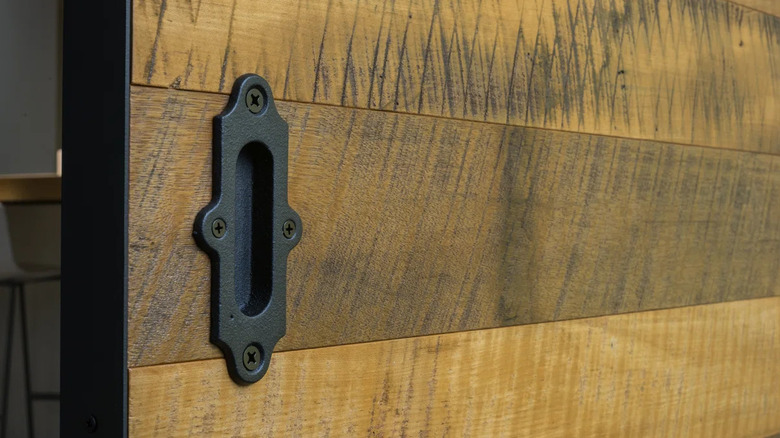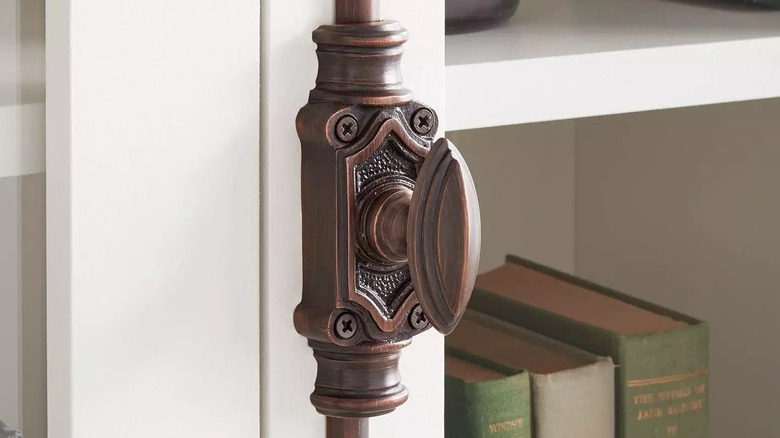The 12 Different Types Of Handles You Should Know Before Updating Your Doors
We may receive a commission on purchases made from links.
Installing new door hardware is one of the easiest ways to update the look of your home. The best door handles come in a huge range of styles, colors, and price tags. But before you determine your budget or decide on the perfect finish, you'll need to carefully consider functionality in order to pick the right type of door handle. Door knobs are so common today that you might be surprised to learn they've only been in use since the 1800s. A big upgrade from their predecessor, the humble sliding bolt. Beyond the basic doorknob, you'll find dummy handles, keyed entry mechanisms, mortise locks, backplate handles, and more as you start shopping. It's important to understand the differences between each type of handle before updating your doors to make sure you pick one that balances form with function.
Whether you have a brand new door or you simply want to replace your outdated door knobs, there are some important questions to ask yourself before buying new hardware. Are you picking a handle for an interior or exterior door? Will the handle work with your existing door's thickness and pre-bored holes, or will you need to replace the door, too? How much daily use do you expect? Do special features like fingerprint resistance make sense for your family's lifestyle? Once you've got these answers narrowed down, before determining what look and finish will help you create the door of your dreams, it's time to choose the right type of handle.
Locking door knobs
For some interior doors, like a bedroom or bathroom, privacy is important. Privacy door knobs have a push-button or tab-like turning mechanism in the center that engages a small built-in lock. They are easily unlocked by twisting the handle or turning the tab on the locking side of the door. But for safety's sake, privacy door knobs can also be unlocked from the other side. You'll simply push a small flathead tool inside the little door knob hole to release the lock in an emergency situation.
Passage door knobs
Unless you can't stop yourself from midnight snacking, pantry doors don't usually need to be locked. The same goes for the closet, laundry room, and other interior doors where separation, not privacy, is intended. Passage door knobs are ideal for these situations. Featuring non-locking handles, they still twist to open or latch a door closed, but can be freely opened from either side. Since they don't have a lock mechanism, passage door knobs are often a cheaper option than privacy door knobs in the exact same finish and style.
Dummy door knobs
Dummy door knobs are just for looks. A non-functional knob that doesn't turn, latch, or lock, they're an excellent option if you've got a set of double doors that doesn't need to open on both sides, closet doors with ball catches, or a decorative pantry door that uses a roller latch. They're also commonly used on cabinet doors. Dummy door knobs are simply mounted directly to a door for either decorative or pulling purposes. They're another less expensive option due to their simplicity.
Keyed-entry door knobs
When security is a top priority, you'll need a keyed-entry door knob that provides greater protection than privacy door knobs. Ideal for front doors, garage doors, or other exterior doors, these door knobs are locked and unlocked with a key that engages a cylinder lock, pins, and springs on one side, and usually a tab or push button on the other. Designed to withstand weather and potential tampering, they're typically made of heavier-duty materials and more complex engineering that increases the cost. For the greatest level of privacy and security, consider putting a deadlock bolt on your door, too.
Door handle sets
If a knob looks too clunky and you prefer something more streamlined, you may want to install a door handle instead. Also available in dummy, passage, privacy, and security models, most door handles come in sets that work either by pushing down or turning them to activate a spindle that retracts the latch bolt inside. When you release the handle, the spring pushes the latch back out where it sticks in the strike plate, either on the opposite door or the door frame itself, to keep your door in place.
Smart door handles
Do you buy all the latest gadgets in order to make your house a smart home? Consider a smart door handle like the bestselling Schlage Keyless Entry Touchscreen Door Lock. Smart door handles have integrated features like keypad access that let you use a code instead of a key to lock or unlock your door. Some even offer Bluetooth or Wi-Fi connectivity that allows you to integrate them with other smart home systems or grant access remotely. Most smart door handles are battery-powered and designed to retrofit the existing bored holes, making them easy to install.
Backplate door handles
Backplate door handles are one of the stunning historic home trends that need to make a comeback. These door handles are mounted on a long metal plate (the backplate) installed between the handle and the door itself. Backplates often incorporate a door handle, a keyhole or locking mechanism, and ornate decorative elements. If you need to cover up old screw holes or damage from your previous door knob, a backplate handle is well worth the investment and time it takes to install. Although you can find backplate handles with a decidedly modern flair, an ornate one is an excellent choice if you love the vintage or Victorian look.
Mortise Handles
A mortise handle is a special type of door knob that's often used in older or luxury homes. This type of door handle uses a mortise lock system, which typically includes a rectangular backplate connected to a large lock body that is recessed into a door. They often also include a keyhole and deadbolt. Their sturdy design and construction make mortise handles a very secure choice compared to normal door handles. They are great for exterior doors, although you'll find them much harder to install because they're not typically compatible with modern, pre-bored doors.
Pull handles
Some types of doors, like shower doors, pocket doors, and barn doors, will never need to be locked. In many cases, they don't even need to latch. Pull handles are the ideal solution in these scenarios because they are designed to be firmly fixed to a door and pulled instead of turned. Available in a wide variety of shapes, from straight bars or arches to decorative options like the JUXYES Seahorse Shaped Zinc Handle Pulls, they won't secure your door, but can make it look extremely stylish.
Thumb latch handles
Commonly used on gates and garden doors, but also cute if you're going for a cottagecore vibe inside, a thumb latch handle works by pressing down on a thumb-shaped lever built into the handle that lifts a latch bar on the opposite side of the door. Once the latch is disengaged from the catch, the door can swing open. Although thumb latch handles are simple and add a lot of charm, unless you buy one specifically intended for an exterior door, like the Grandeur One-Piece Handleset in Vintage Brass from Amazon, they aren't ideal for doors where security is important.
Cup pulls
Cup pulls are a specific kind of handle that allows your fingers to grip inside a curved lip or slightly recessed opening in order to open or close a door. They are typically mounted flat against a door's surface or are slightly recessed into the door, and are ideal for closets where they can be used as sets. Since cup pulls are likely to be used more frequently, make sure the ones you select provide a comfortable grip and are made from a durable material that either has an antimicrobial finish or is easy to clean.
Cremone bolt handle
Cremone bolt handles are absolute showstoppers. The unusual hardware combines a single handle or knob with vertical rods that move up and down to secure a door at both the top and bottom. The handle rotates a gear inside that moves the rods into or out of sockets installed directly inside a door frame. More frequently spotted in old world and European homes, if you want an elegant look on your interior French doors that stands out in the best possible way while also providing a functional latch, you can buy cremone bolt handle systems from restoration or reproduction door hardware purveyors.
